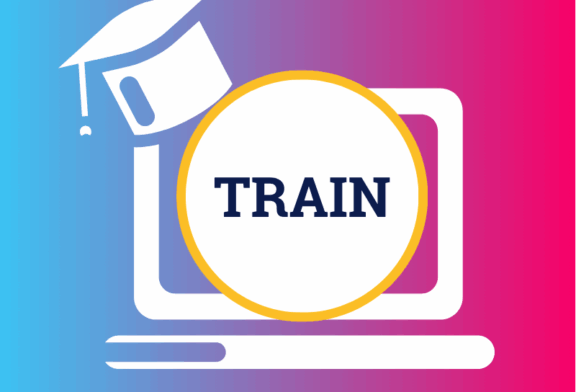Microsoft Teams is a powerful tool for ensuring employees are involved in the right conversations. But its versatility is often under-exploited by leaders and managers who fail to move beyond simply setting up Teams and channels. By integrating with a performance management suite, businesses can unlock a wide range of tools to improve their operating processes which enhance the value of Microsoft Teams.
 Ongoing training to drive performance and engagement
Ongoing training to drive performance and engagement
Providing ongoing training and giving employees the option to learn new skills has always been one of the key factors for employees when looking at job satisfaction. Employees who are able to learn new skills to improve both their individual and career goals, developing a talent stack that broadens their horizons and opens up a wider range of options, will commit themselves to their goals and value their role within an organization.
A study from the International Journal of Adult Vocational Education and Technology by Steven Schmidt, The Relationship Between Job Satisfaction: A Review of the Literature, identified three important functions of training within an organization:
- Maintaining employees’ existing performance as required by the organization.
- Improving employee motivation by strengthening employees’ beliefs in their abilities to perform their jobs.
- Assisting with employee socialization and understanding of organizational priorities, norms, and values. Training methodology, structure, delivery, and content all reflect these organizational issues.
Given the drastic shift toward widespread remote working in 2020, the way in which businesses, leaders and managers deliver this ongoing training has understandably undergone major changes. Businesses can no longer send employees on training courses while coaching and mentoring in person is often unviable. New processes for training have to be adopted which account for the digital divide and help people connect across various remote stations.
Hybrid jobs and the skills of the future
When it comes to the types of skills demanded in the workforce there are two main categories: technical skills and soft skills. These comprise broadly of:
Technical skills: these are skills specific to an employee’s given discipline or related to technology, for instance Search Engine Optimization, graphic design, and a variety of IT-related skills for which there is ample training material available online and elsewhere.
Soft skills: these are more ambiguous but nevertheless crucial skills including communications, writing, influence, leadership, social media marketing and general project management.
While training for technical skills is an important aspect of skills development for many employees, it is in the realm of soft skill development that the biggest changes are occurring, as the younger generation of workers increasingly come to view these behavioural skills as the most important to the future of their work.
Josh Bersin highlights this shifting trend in the article, Microsoft Gets Serious About Learning: Major New Announcements:
“If you look at LinkedIn’s most “in-demand” skills in the San Francisco Bay Area this May, the results are surprising. While the most in-demand skill is JavaScript, the remaining top skills are Account Management, Writing, Recruiting, Program Management, Creative Writing, Data Analysis, Social Media Marketing, and Sales Management. If you add up the numerical weighting of these soft skills vs. technical skills, they are more than 10 times more important.”
Microsoft have been taking the initiative to help with the development of employee skills, beginning with lowering the price of their certifications to just $15 throughout early 2021. For institutions that want to better understand the nature of job paths, skills and how to target their development funds, Microsoft are also giving away LinkedIn Economic Graph data which could prove to be invaluable.

Learning with Microsoft Teams and integrating performance management tools
Microsoft Teams is also fast becoming a new source of skills development, as its userbase continues to increase significantly as remote working becomes a core aspect of the “new normal”, and the company seeks to expand its functionality beyond its core features.
Plans for a “Microsoft Learning App for Teams” points towards the company’s commitment to making skills development and training an integral element of the platform. Since the Teams system can index and translate content, and highlight skills based on teams, channels or topics, it has the potential to help managers to identify where learning is required, as well as what tools are available for training and how these methods have previously impacted individual or team productivity.
Beyond the core features of Microsoft Teams itself are the many tools that users can add to Teams via plug-ins, including powerful performance management tools which bring significant benefits to leaders and managers looking to encourage the development of talent:
Creating and boosting a learning culture

Performance management software allows leaders and managers to set the tone of the company’s ethics and priorities and boost the signal across the workforce, encouraging the behaviours they wish to see reflected. By making feedback and learning central to the business ethos, leaders can be assured that a positive work environment that values personal development and the continuous sharing of knowledge is embedded in the mindset of its employees.
Setting and tracking development objectives…
Establishing development objectives across individuals, teams and departments allows leaders to clarify their short- and long-term business strategy, tracking progress towards the goals which matter the most. Development objectives can cover a wide variety of topics, from personal training and skills development to management, leadership and productivity.
… And linking these to Personal Development Plans
By crafting individual Personal Development Plans (PDPs) to the broader aims of the company, managers can ensure that each individual’s personal growth within the organization matches both their own skillset and the requirements of the company. Assessment of the strengths and weaknesses of an employee can be weighed up and the training required to address these issues can be provided, all while keeping their development aligned with the company’s core mission.
Identifying employee skill sets
The ability to be able to identify and track employee skill sets gives managers and leaders the oversight necessary to build the best teams and departments. Each employee has their own strengths and weaknesses and can offer their own unique insight into a given problem while offering a wider variety of potential solutions.
Performance management tools allow users to customize individuals and their roles, highlight skills gaps for targeted training, and bring staff together with complementary talents so that they can succeed in their goals.
Using MS Teams for inductions and onboarding
As well as being used to keep employees focused on the important conversations using Teams and associated channels, Microsoft Teams can also be used to create a smoother induction and onboarding process via the creation of Teams specifically to coordinate recruitment, induction and training.
Such Teams can include channels where leaders and managers can discuss methods for imparting training and development to new hires, as well as evaluate strategy and gather feedback on performance. New employees can join channels where they are introduced to their colleagues, brought up to speed on current objectives, and access Wikis outlining company policies, behavioural expectations and their roles within a given team.
Streamlining onboarding with HR admin tools
By using performance management software with HR admin tools, HR leaders and managers can increase the flexibility of their workflow with a host of additional processes and data at their disposal. Whether onboarding temporary workers or full-time positions, automated processes and worksheet templates ensure that policies are communicated consistently and contracts for remote workers can be digitally signed off.
Managers and HR leaders can track a wide variety of employee data on a timeline, allowing them to understand with ease how a given employee is developing their skills, what areas of their role might require additional support or training, and how this ties into their overall performance and engagement.
Job-centric upskilling in 2020 and beyond
The need for companies to place training and skills at the forefront of their business strategy moving beyond 2020 has been highlighted by Deloitte in their article, Job-centric upskilling: The new workforce development imperative. By using Microsoft Teams in conjunction with powerful performance management tools, business leaders are able to adopt a flexible approach to training tailored to the requirements of the workforce while aligned to the goals of the company.
As Deloitte reports, such training should be tied intimately to the feedback mechanisms featured in performance management tools, to allow strategies to adapt as and when required:
“Job-centric upskilling likely won’t be sustainable unless it can demonstrate benefit to both job seekers and the companies that hire them. That’s why it is critical to get continuous feedback from both trainees and employers. Hard data, as well as more informal feedback, can show what is and isn’t working …”





